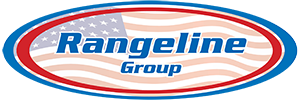Hydrant Maintenance

At Rangeline Group, we understand the importance of keeping fire hydrants in good working condition. Fire hydrants are one of the most important elements of a fire protection system, and they play a vital role in ensuring public safety during emergencies. Regularly maintaining fire hydrants is crucial to ensure they function properly. With our hydrant maintenance service, we provide top-notch inspection, testing, and repair services to keep your fire hydrants in peak condition.
This type of maintenance is critical, as it ensures that the hydrants are ready to go when firefighters need them the most. During an emergency, having a well-maintained fire hydrant can make all the difference. A malfunctioning hydrant can lead to delays in putting out the fire, potentially endangering lives and property. The importance of fire hydrant maintenance cannot be overstated, and it is something that you should never ignore.
A hydrant maintenance program can also improve a utility’s ISO rating and is a visible sign to the public that the utility is working to protect its property and personal safety. No one knows proper hydrant maintenance like Rangeline Group does. We provide peace of mind regarding your hydrants by focusing on more than just meeting hydrant guidelines; we also ensure you and your property are safe in case of an emergency.
We’ve designed our fire hydrant maintenance service in a way that ensures your hydrants are in good working condition and ready for use at any time. We conduct a comprehensive inspection of each hydrant, checking for any signs of damage or wear and tear. We then perform tests to ensure the hydrant functions correctly, including checking the water pressure and flow rate. If any repairs or replacements are necessary, our team of qualified pipeline repair experts can quickly take care of them.
Water quality can improve when incorporated into an organized flushing program. Our Hydrant Maintenance and Assessment program is conducted to AWWA standards and can be tailored to meet the needs of any utility. Fire hydrant maintenance and inspections are crucial parts of public safety, something that Rangeline takes very seriously. When it comes time to ensure a fire hydrant is up to code and working properly, Rangeline doesn’t cut any corners, ensuring everything is in working order down to the last tiny detail.
It should go without saying, but fire hydrant maintenance is essential for all property owners, including commercial and industrial property owners. Still, it’s usually up to municipalities and water utility companies to take care of maintenance needs. This is why these groups come to a fire hydrant maintenance company like us. By partnering with Rangeline Group for your fire hydrant maintenance needs, you can rest assured that your hydrants are in good hands with professionals who have the skills and experience to keep them operating smoothly.
At Rangeline Group, we provide top-quality hydrant maintenance services to ensure that your hydrants are in peak condition and ready for use at any time. Learn more about what our program includes below to see if we can help you with your fire hydrant needs.
R&M’s Program Includes:
- Location of fire hydrant
- Verify nozzle height for proper ground clearance
- Determine main valve and hose/pumper nozzle sizes
- Perform seal test
- Conduct flow test (excluding residuals)
- Obtain GPS coordinates of hydrant and isolation valve
- Present information in a user friendly data base
- Provide recommended repair/replacement action
- Locate/exercise isolation valve
- Catalog make, model, and year of hydrant manufacture
- Lubricate operating nut area/nozzle outlets using F.D.A. approved lubricant
- Check for main valve leakage
- Record static pressure
- Document operational deficiencies and/or miscellaneous findings
- Report out of service hydrants immediately to the Utility
Additional Services:
Upper and/or lower barrel repairs, installation of extensions to adjust for grade, replacement of bonnet and/or bottom flange bolts, placement of hydrant I.D. tag, leak sounding at each hydrant location, sub-foot GPS coordinates.
For more information, or to request services, contact us.
